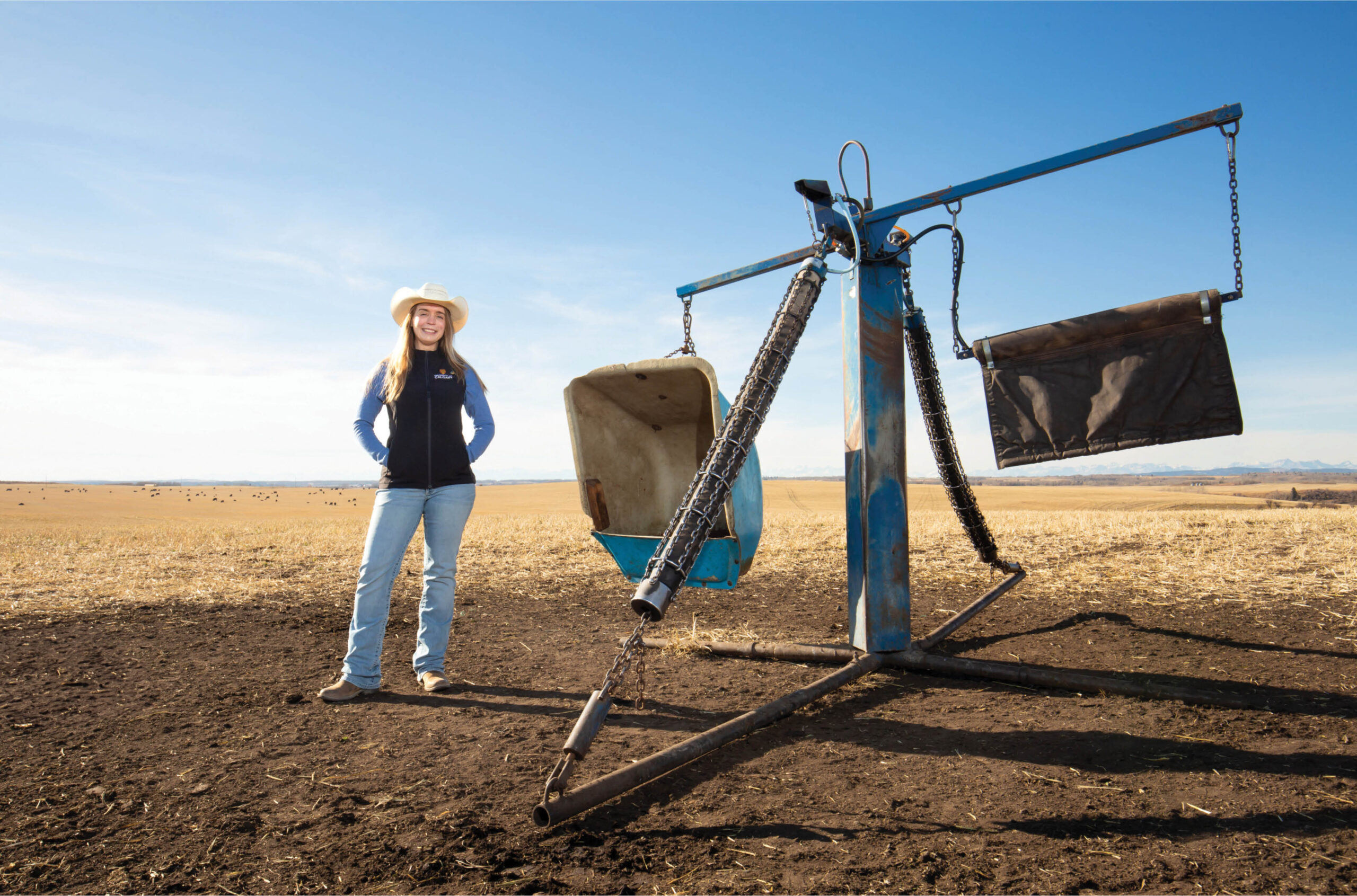UCalgary postdoc studying how to protect cattle from pesky flies
Not just a nuisance, flies pose potential health and behavioural risks to cows.

When irritating insects descend, humans can bathe in bug spray or go inside. Unfortunately, cows out in an open field don’t have the same luxury, a problem that has potentially major impacts on their wellbeing. That’s why postdoctoral researcher Rachael Coon is studying the effectiveness of oilers – large barrels fixed with tassels – for keeping cattle fly-free.
The oilers – which the animals like to scratch and rub up against – stay out in the field and cows get a nice coating of insecticide by walking under the tassels, which have been saturated with a mineral oil that contains an insecticide. Next summer, Dr. Coon will lead a pilot project with the school of veterinary medicine’s W.A. Ranches, a working cow-calf ranch, about the use of oilers, a large barrel affixed with tassels coated in insecticide. “There is no research currently to tell us whether cattle are using the oiler because of the enrichments included, or if they’re using it because they’re aware of the potential benefits in terms of keeping flies off them, so that’s a part I’m interested in studying,” Dr. Coon said.
Other methods for keeping flies at bay, like applying insecticide topically or using ear tags infused with it, can be burdensome for producers, said Dr. Coon. “I’m interested in both a health perspective, that looks at how to minimize the amount of pesticides we’re using, by monitoring fly populations, while also using a method that is not as labour- intensive for cattle producers.” Bites and irritation cause behaviour issues like avoidance and aggression, she explained, making it more challenging to care for cattle. Flies also contribute to the spread of diseases like pinkeye, which is estimated to cause about $150 million in annual economic loss in the American cattle industry. One theory is that when flies are abundant, cows tend to bunch up together, “and they’re transmitting [pinkeye] by contact,” Dr. Coon said.
Her project will also track fly populations. By attaching a device used for monitoring fruit flies to the oiler, Dr. Coon will be able to capture real-time images of the pests. From there, she’ll use computer algorithms to monitor the types of flies, with the hope of creating a more informed approach to pesticide use.
“One of the current recommendations [for pest control] is to avoid more than 200 flies per animal, which is quite a difficult task,” Dr. Coon said. “I’m interested in whether there are other ways we could be assessing fly numbers that don’t require the producer to be out on pasture, actually counting.” The device would also allow producers to monitor fly numbers in real time from their smartphones.
In terms of wider potential for this research, Dr. Coon said she hopes it can be adapted to environments where cattle are kept more densely, such as feedlots before slaughter. That’s where the idea for this project first came to her, when working with cattle in that setting during her PhD at the University of California, Davis. “It’s a very hot climate and in the summer the flies were overwhelming, and I could see that they were affecting the animal’s behaviour negatively,” she said. With this project, she’s looking forward to taking the results from a pasture-based setting and applying it to more “intensively managed systems.”
Other pasture-based animals impacted by flies, like goats and sheep, could also be future candidates. “Ultimately the goal for me as an animal behavior specialist is to improve animal welfare,” Dr. Coon said.
Featured Jobs
- Business - Assistant Professor (Digital Technology)Queen's University
- Sociology - Professor (Quantitative Data Analysis Methods and Social Statistics)Université Laval
- Geography - Assistant Professor (Indigenous Geographies)University of Victoria
- Director and Stauffer-Dunning Chair, School of Policy Studies - Associate or Full ProfessorQueen's University
- Law - Assistant or Associate Professor (International Economic Law)Queen's University











Post a comment
University Affairs moderates all comments according to the following guidelines. If approved, comments generally appear within one business day. We may republish particularly insightful remarks in our print edition or elsewhere.